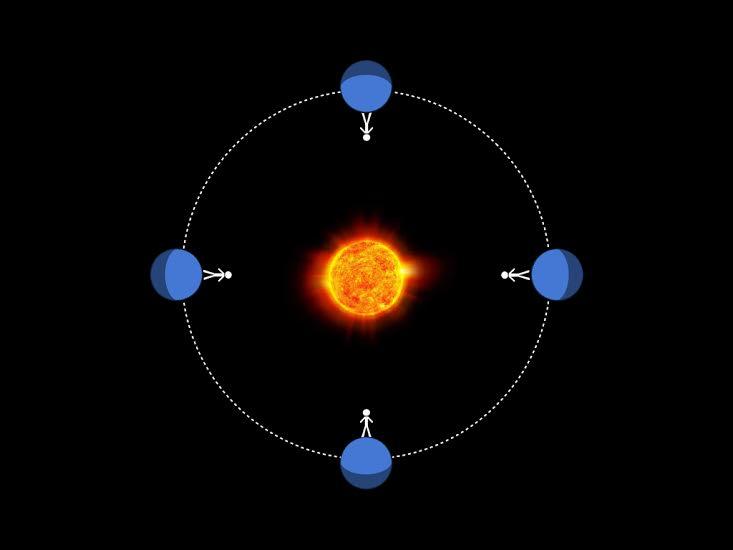Forget “Earth-Like”—We’ll First Find Aliens on Eyeball Planets
BY SEAN RAYMOND
 A planet that is tidally “locked” to its star. As the planet orbits the star along the dotted line, the same side of the planet always faces toward the star. The stick figure is standing at the substellar point, where the star is always directly overhead.
A planet that is tidally “locked” to its star. As the planet orbits the star along the dotted line, the same side of the planet always faces toward the star. The stick figure is standing at the substellar point, where the star is always directly overhead.
Imagine a habitable planet orbiting a distant star. You’re probably picturing a variation of Earth. Maybe it’s a little cloudier, or covered in oceans. Maybe the mountains are a little higher. Maybe the trees are red instead of green. Maybe there are scantily clad natives … OK, let’s stop there.
That image may very well be completely off-base. There is good reason to think that the first potentially life-bearing worlds that are now being detected around other stars (see here for example) probably look very different than Earth. Rather, these planets are more likely to look like giant eyeballs whose gaze is forever fixed on their host stars (which is not something I recommend doing with your own eyeballs).
Let’s take a step back. The easiest planets to find are those that orbit close to their stars. The sweet spot for finding a habitable planet—with the same temperature as Earth—is on a much smaller orbit than Earth’s around a star much fainter than the Sun. But there are consequences of having a smaller orbit. A planet close to its star feels strong tides from its star, like the tides Earth feels from the Moon, but much stronger. Strong tides change how a planet spins. Tides drive the planet’s obliquityto zero, meaning that the planet’s equator is perfectly aligned with its orbit. The planet will also be “tidally locked”: It always shows the same side to the star.
If you were standing on the surface of a planet like this, the Sun would remain fixed in one spot on the sky. The hemisphere facing the star is in constant daylight and the far hemisphere in constant darkness. In between lies a ring of eternal sunset, quite possibly the most romantic place in the Universe. The hottest part of the planet is the location where the star is directly overhead (the “substellar point” in astro-speak). The hottest part of Earth is spread out across the tropics, depending on the time and the season. But on a tidally locked planet the Sun stays in the same place in the sky and the hot spot never moves. This creates visible differences across the planet’s surface; the relatively small hot spot is the “pupil” of an eyeball planet.
